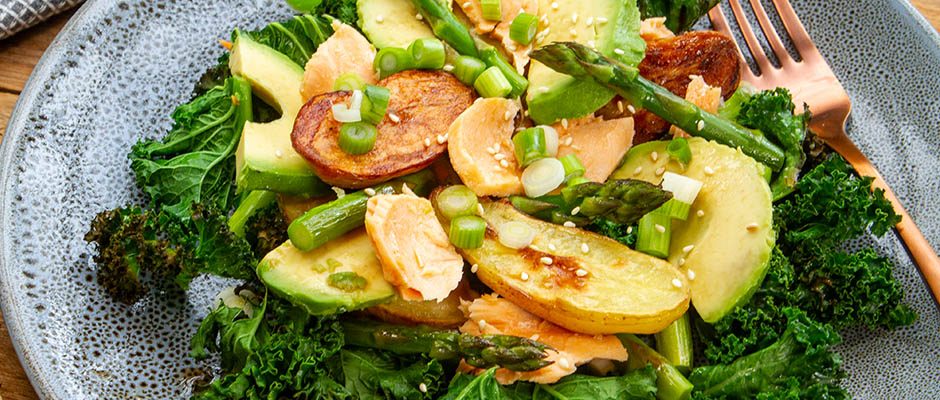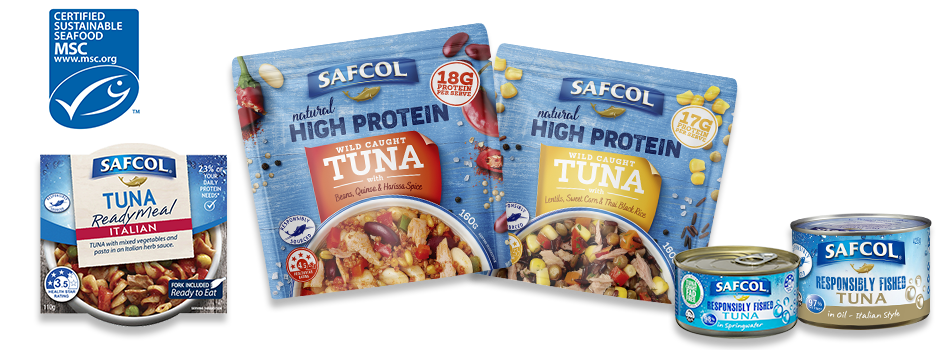by Ashleigh Feltham
Accredited Practising Dietitian and Accredited Nutritionist
Seafood provides your body with a matrix of health benefits. One of these is magnesium. Magnesium is an essential major mineral your body needs to function. It is involved in over 325 different body functions. Magnesium can be described as a good friend who is always trying to calm you down if you are stressed or after an intense exercise session.
Some of the many functions of magnesium include:
Improved bone health
Magnesium helps to create a healthy balance of activation of osteoblasts and osteoclasts. Osteoblasts are the bone-building cells, and osteoclasts are the bone-removing cells. Osteoclasts have an important role in bone remodelling and development. We need the balanced function of both osteoblasts and osteoclasts to create and maintain strong bones.
Optimising sleep quality
Do you value a good night’s sleep? Magnesium helps to increase the sleep-inducing signals from a hormone called melatonin. This helps with sleep quality and helps to improve your mood.
Improving blood pressure
Magnesium is linked to better heart health and can help keep blood pressure within a healthy range. It helps to balance the electrolytes, sodium and potassium. These two electrolytes play major roles in determining your blood pressure levels. Having enough magnesium helps to lower your blood pressure, putting less pressure on your heart.
Increase in exercise performance
Magnesium helps your body to perform at its best. Magnesium turns the food we eat into energy, assisting with both aerobic and anaerobic exercise.
Reduce stress
Are you constantly in a state of stress? Magnesium releases neurotransmitters, or signals, needed to reduce stress in the body. It brings a state of normal balance back to where your body is at its happiest.
Keep in mind how much magnesium you need each day. Men over the age of 31 years need 350mg every day, and women need a daily dose of 265mg.
Here are 20 foods that contain magnesium.
Include some of these in your day to get enough magnesium for a healthy body. Creating complete meals and snacks will help you easily achieve your magnesium needs each day. Average amounts of magnesium are per 100g of the following foods.
- Anchovies 101mg
- Oysters 98mg
- Mussels 75mg
- Tuna 50mg
- Salmon 30mg
- Firm tofu 78mg
- Pumpkin seeds 592mg
- Sunflower seeds 370mg
- Peanut butter 180mg
- Uncooked rolled oats 104mg
- Raw spinach 107mg
- Raw almonds 266mg
- Cheese 70mg
- Avocado 73mg
- Wholewheat bread 99mg
- Quinoa 64mg
- Brown rice 143mg
- Whole wheat pasta 42mg
- Yoghurt 25mg
- Soy milk 25mg
For the time-poor, try Safcol Ready Meals and high protein meals. My favourites are Wild Caught Tuna with Beans, Quinoa and Harissa Spice and Salmon Meal Spanish Paella Style. They both give your body all the components needed to satisfy your body’s nutritional needs in one meal. A balanced diet will help you get a daily dose of magnesium.
Take home message
Magnesium is an essential mineral that your body needs for hundreds of functions. Follow a balanced diet to easily meet your daily magnesium needs. Aim to include plenty of seafood and plant-based foods for the benefit of your body.
















Comments are closed.